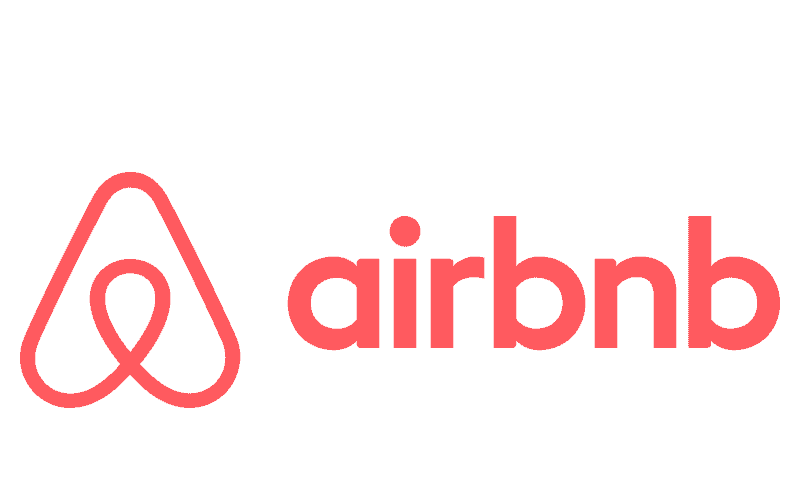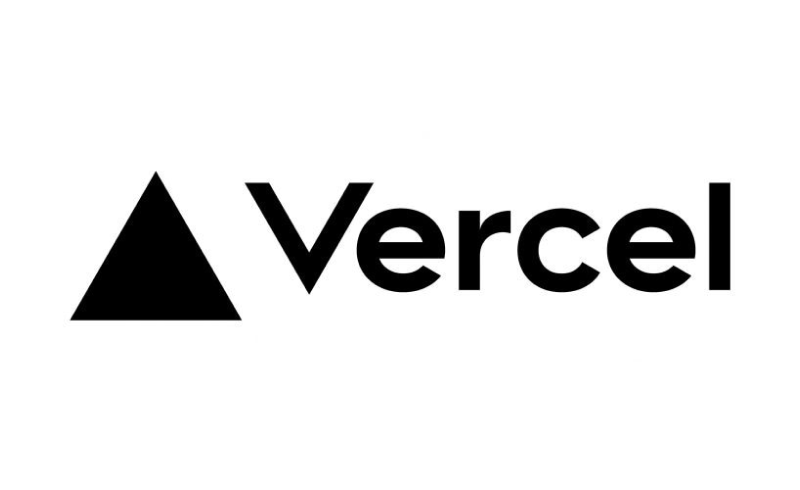Vercel is a powerful cloud platform for web development and deployment. It offers fast, scalable, and secure solutions to build and launch modern websites and applications. By combining global CDN, automatic scaling, serverless functions, and collaboration tools, Vercel provides a comprehensive solution that streamlines the entire development process. Whether for a small business, startup, or enterprise, Vercel’s user-friendly interface and robust infrastructure ensure a smooth and efficient web development experience.
What is Vercel?
Vercel is a powerful cloud platform designed to facilitate deployment and hosting of web applications. It emerged as a result of the increasing demand for efficient and scalable solutions in the realm of web development. Vercel aims to simplify the process of building and deploying websites, offering developers a comprehensive suite of tools to improve productivity and user experience.
Born out of the Next.js framework, Vercel provides a serverless architecture, meaning developers can focus on writing code without the need to manage servers or infrastructure. This serverless approach enables automatic scaling, so that applications can handle varying traffic loads without any manual intervention.
Vercel was built to address the challenges faced by developers in deploying static websites, dynamic applications, and serverless functions. With a strong emphasis on performance, it leverages cutting-edge technologies such as edge computing and global CDN (Content Delivery Network) to deliver fast and reliable content to users around the world. The platform also integrates seamlessly with popular version control systems like Git, enabling continuous deployment and facilitating collaborative development workflows.
How does Vercel work?
At its core, Vercel operates on a simple yet powerful architecture where developers can deploy and host their web applications more easily. When a developer pushes their code to a version control system like Git, Vercel automatically detects the changes and initiates the deployment process by fetching the latest code and running a series of build steps based on the project’s configuration.
During the build process, Vercel optimizes the code, performs static analysis, and compiles the necessary assets. The platform supports popular frameworks like Next.js, leading to advanced features such as server-side rendering (SSR) and dynamic routing becoming accessible for developers. Vercel also provides built-in support for other programming languages and frameworks, making it a popular choice for various web development projects.
Once the build process is complete, Vercel generates a production-ready artifact that is optimized for performance. This artifact is deployed across a global network of edge servers, strategically located to ensure low-latency content delivery. When leveraging the power of edge computing, Vercel caches static assets and serves them from the edge, reducing the load on the origin servers and providing faster response times to end users.
Vercel integrates with Content Delivery Networks (CDNs), allowing for more efficient distribution of content across geographically dispersed locations. This means that users can access the application with minimal latency, regardless of their geographic location. Furthermore, Vercel offers automatic scaling based on demand, allowing the application to handle sudden spikes in traffic without any manual intervention.
Unique technical features of Vercel
Edge network and global CDN | Vercel leverages an edge network and integrates with a global Content Delivery Network (CDN). This architecture makes sure that content is cached and delivered from edge servers located worldwide, reducing latency and providing fast access to web applications regardless of the user’s geographic location. |
Automatic scaling | With automatic scaling capabilities, Vercel allows web applications to handle traffic spikes without manual intervention. The platform monitors the incoming traffic and dynamically scales the infrastructure to ensure optimal performance and availability during peak usage periods. |
Continuous deployment | Integration with version control systems like Git, facilitates continuous deployment. As developers push their code to the repository, Vercel automatically detects changes and initiates the build and deployment process, ensuring that the latest version of the application is always live. |
Advanced build and optimization | During the build process, the platform performs static analysis, optimizes the code, and compiles the necessary assets. This results in efficient asset delivery, reduced load times, and improved overall performance of web applications. |
Support for multiple frameworks and languages | A wide range of frameworks and programming languages are supported, providing flexibility and compatibility for developers. Popular frameworks like Next.js are natively supported, while other languages and frameworks can be easily integrated, making Vercel suitable for diverse web development projects. |
Preview deployments | A unique feature called Preview Deployments, helps developers to generate temporary, shareable URLs for staging environments. This feature means team members, clients, or stakeholders can review and provide feedback on a specific version of the application before it is merged and deployed to production. |
Incremental static regeneration | Incremental Static Regeneration is a feature that combines the benefits of static site generation with dynamic content updates. Developers specify parts of a static site that should be updated at specific intervals or triggered by events and ensure that frequently changing content remains up-to-date while benefiting from the performance advantages of static rendering. |
Environment variables | Vercel provides a secure and convenient way to manage environment variables. These variables can be set through the Vercel dashboard or programmatically, so developers can store sensitive information or configuration settings separate from the source code. This feature enhances security and flexibility when working with different environments and deployment scenarios. |
Analytics and monitoring | Built-in analytics and monitoring tools provide developers with insights into application performance and usage. Developers can track metrics such as traffic patterns, response times, and error rates, allowing them to identify areas for optimization and ensure the overall health and stability of their web applications |
Zero configuration | Vercel prides itself on its zero-configuration approach, providing developers with an intuitive and streamlined development experience. Developers can quickly start new projects without spending time on extensive setup or configuration, allowing them to focus on coding and iterating their ideas efficiently. |
Developer experience (DX) | The platform offers an intuitive user interface, comprehensive documentation, and an active community that fosters knowledge-sharing and support. This commitment to developer experience contributes to increased productivity and satisfaction among developers using Vercel. |
Integration ecosystem | Integration with various popular developer tools and services expands the capabilities and provides developers with a comprehensive ecosystem. This includes integrations with version control systems, headless CMS platforms, monitoring and error tracking tools, deployment pipelines, and more. These integrations enhance developer workflows and allow for seamless integration with existing development stacks. |
Industries that benefit from Vercel

Vercel’s speed and performance optimization capabilities make it a valuable asset for eCommerce businesses. The architecture helps organizations deliver exceptional performance to enhance customer satisfaction and boost conversion rates.

Media companies and publishers often have content-rich websites that require rapid content updates and smooth user interactions. Vercel’s incremental static regeneration and serverless functions allow real-time content updates and dynamic features.

SaaS and enterprise software use Vercel to provide infrastructure for software-as-a-service (SaaS) providers and enterprise software companies by offering scalable hosting, seamless integration with popular frameworks, and streamlined deployment workflows.
Advantages of using Vercel
Rapid deployment and scalability | Organizations quickly publish their web applications with the automatic scaling feature. Due to this, organizations can seamlessly handle varying levels of traffic without manual intervention. This helps organizations use the scaling capabilities for their applications more easily and delivers an optimal user experience during peak usage periods. |
Serverless functions and modular architecture | Serverless functions help organizations to build applications with a modular and scalable architecture. With serverless functions, organizations can offload the burden of managing infrastructure and focus on writing efficient, event-driven code, allowing seamless scaling, reduced development complexity, and improved resource utilization. Vercel’s integration of serverless functions differentiates it from competitors, making it a valuable choice for organizations seeking flexible and scalable application architectures. |
Continuous integration and collaboration | Version control systems like Git mean organizations simplify development workflows through continuous integration. Developers can use Vercel’s automated build and deployment processes to ensure that the latest code changes are seamlessly integrated into their applications. Collaboration among team members, simplifies code versioning, and promotes efficient development practices. |
Serverless database integration | Vercel offers comprehensive integration capabilities with serverless other databases, helping organizations leverage the benefits of database-as-a-service (DBaaS) providers. This eliminates the need for managing database infrastructure, allowing organizations to focus on application logic and data modeling. With Vercel’s serverless database integration, organizations can achieve improved scalability, reduced maintenance overhead, and simplified database management compared to traditional approaches. |
Intelligent image optimization | Vercel includes intelligent image optimization capabilities that automatically optimize images for optimal performance and fast loading times, meaning images are compressed and delivered in the most efficient format based on device capabilities and network conditions. By reducing image file sizes without sacrificing quality, Vercel enhances the overall user experience and helps organizations deliver visually appealing websites with lightning-fast load times. |
Real-time collaboration with live preview | Real-time collaboration features, coupled with live preview functionality, allows organizations to facilitate effective teamwork and streamline the review process. Multiple team members can simultaneously work on projects, making edits and seeing changes in real-time. The live preview feature allows stakeholders and clients to view the progress and provide immediate feedback, reducing communication gaps and expediting the development cycle. |
Built-in security and compliance | Vercel prioritizes security and compliance, offering built-in measures to safeguard web applications and user data. The platform provides features such as automatic SSL/TLS certificate provisioning, secure access controls, and protection against common web vulnerabilities. Vercel’s emphasis on security and adherence to industry standards and regulations make it a trusted choice for organizations that handle sensitive data and have stringent security requirements. |
Extensive ecosystem and integrations | An extensive ecosystem offers streamlined integration with a wide range of tools and services, allowing organizations to leverage their existing development stack and integrate with popular services for tasks such as content management, monitoring, analytics, and more. Vercel’s extensive ecosystem and integrations provide organizations with flexibility and compatibility, making it easier to incorporate Vercel into their existing workflows and systems. |
Collaboration and teamwork | Vercel facilitates collaborative development by providing features that support team workflows. Developers can work together, manage code versions, and coordinate deployments efficiently, enhancing productivity and enabling smooth collaboration within development teams. |
Organizations using Vercel

Airbnb, a leading online marketplace for vacation rentals, utilizes Vercel for its frontend development and deployment needs. With Vercel’s powerful serverless functions, Airbnb is able to build dynamic and interactive features while ensuring excellent performance and scalability across its platform.

The popular social media platform TikTok leverages Vercel to enhance its web presence. Vercel’s edge network and global CDN lets TikTok deliver content quickly to users worldwide, facilitating smooth video playback and an optimal user experience.

Vercel is also used by Hulu, a well-known streaming platform, to power its web application. Vercel’s automatic scaling and efficient asset delivery enable Hulu to handle high traffic volumes, deliver streaming content seamlessly, and provide an enjoyable viewing experience to its users.
Potential disadvantages from Vercel
Limited backend customization options
One disadvantage of using Vercel for an organization is the limited backend customization options. While Vercel provides powerful frontend deployment and serverless functionality, it may not be the ideal choice for complex backend requirements. Organizations that heavily rely on custom backend logic, intricate database setups, or specific server configurations might find Vercel’s constraints restrictive and may require more flexible hosting solutions.
Dependency on external services
Vercel heavily relies on external services, which can be seen as a potential disadvantage for organizations. While this dependency allows for simpler integration with various tools and services, it also means that any disruptions or downtime with these external services can impact the functioning of Vercel deployments.
Pricing structure and scalability
The pricing structure may not be suitable for all organizations, particularly those with specific scalability requirements. While Vercel offers different pricing tiers based on usage and features, organizations experiencing sudden or unpredictable spikes in traffic may face challenges in managing costs effectively. It’s important for organizations to carefully evaluate their expected traffic patterns and assess the scalability options provided by Vercel to ensure alignment with their budget and operational needs.
Limited server-side control
As a serverless architecture, Vercel’s platform abstracts away many of the server-side control aspects. While this can be advantageous for simplicity and ease of use, organizations that require fine-grained control over server configurations, security measures, or specialized server applications may find Vercel’s limited server-side control restrictive. In such cases, organizations might need to consider alternative hosting solutions that provide more flexibility and control over the server environment.

